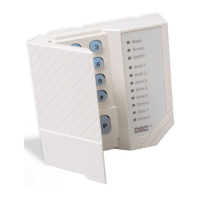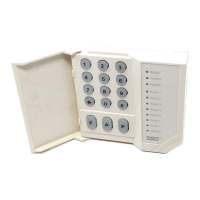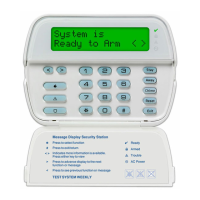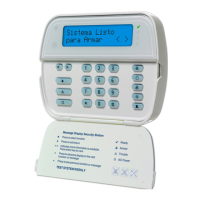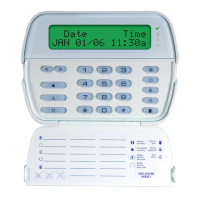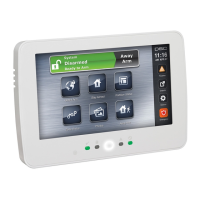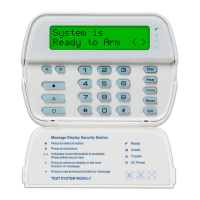6
Zone Bypassing (Continued)
For security reasons, your installer may prevent the bypass command from
working on certain zones. The “Bypass” light is ON as long as ONE or more
zones are bypassed. Do not unintentionally arm the system with zones bypassed.
Zone bypasses are automatically cancelled each time the system is disarmed
and must be re-applied before the next arming.
Viewing Trouble Conditions
The PC1500/PC1550 continuously monitors a number of possible trouble
conditions. If one of these trouble conditions occur, the keypad will beep twice
every 10 seconds and the keypad “Trouble” indicator will light. Pressing any key
on the keypad will silence the sounder but the “Trouble” light will remain ON until
the trouble condition is cleared. If you cannot determine the cause of the trouble
condition, contact your installer for assistance.
To view type of trouble:
Press [
∗
][2] to display the type of trouble. A zone light will come on to indicate
which type of trouble exists.
Press
[#]
to return to Ready.
ZONE LIGHT TYPE OF TROUBLE
1 ......................... Low battery.
2 ......................... Loss of AC power (“Trouble” light will come ON,
but keypad buzzer will not sound).
3 ......................... Fuse open (BELL or AUX fuse).
4 ......................... Fail to communicate with monitoring station.
5 ......................... Fire loop(s) trouble.
6 ......................... Loss of time on system clock.
Keypad Zones
There are three keys on the keypad labelled [F] Fire, [A] Auxiliary and [P] Panic.
These keys are only functional if they have been programmed by your installer.
The installer should indicate which of these keys are functional by placing a
coloured label next to the key symbol on the keypad door label.
[F] Fire
Holding this key down for two seconds will sound a Fire Alarm. The alarm will
sound pulsing. The keypad will sound three beeps once the panel has accepted
the alarm. An auxiliary warning device is also activated if your installer has
connected it to your system. To silence the alarm, enter a valid access code.
[A] Auxiliary
Holding this key down for two seconds activates this function if your installer has
programmed it. There is no audible alarm and no lights on the keypad will come
on. When the panel has accepted the alarm, the keypad will sound a series of
beeps. An auxiliary warning device is activated ONLY IF connected to your
system by your installer.
11
• Exits on the ground level should be kept clear. Be sure to remove snow
from exterior patio doors in winter; outdoor furniture or equipment should
not block exits.
• The family should have a predetermined assembly point where everyone can
be accounted for; for example, across the street or at a neighbour’s house.
• Once everyone is out of the house, call the Fire Department.
• A good plan emphasizes quick escape. Do not investigate first or attempt
to fight the fire, and do not attempt to rescue belongings or pets as this
takes up valuable time. Once outside, do not re-enter the house. Wait for
the fire department.
• Write the plan down and rehearse frequently, so that should an emergency
arise, everyone will know what they are to do. Revise the plan as
conditions change; for example, when there are more or fewer family
members in the home, or if there are changes to the house.
• Make sure your fire warning system is operational by conducting weekly
tests as noted elsewhere in this manual. If you are unsure about system
operation, contact your installing dealer.
• It is recommended that you contact your local fire department and
request further information on home fire safety and escape planning. If
available, have your local fire prevention officer conduct an in-house fire
safety inspection.
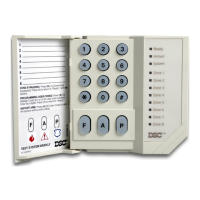
